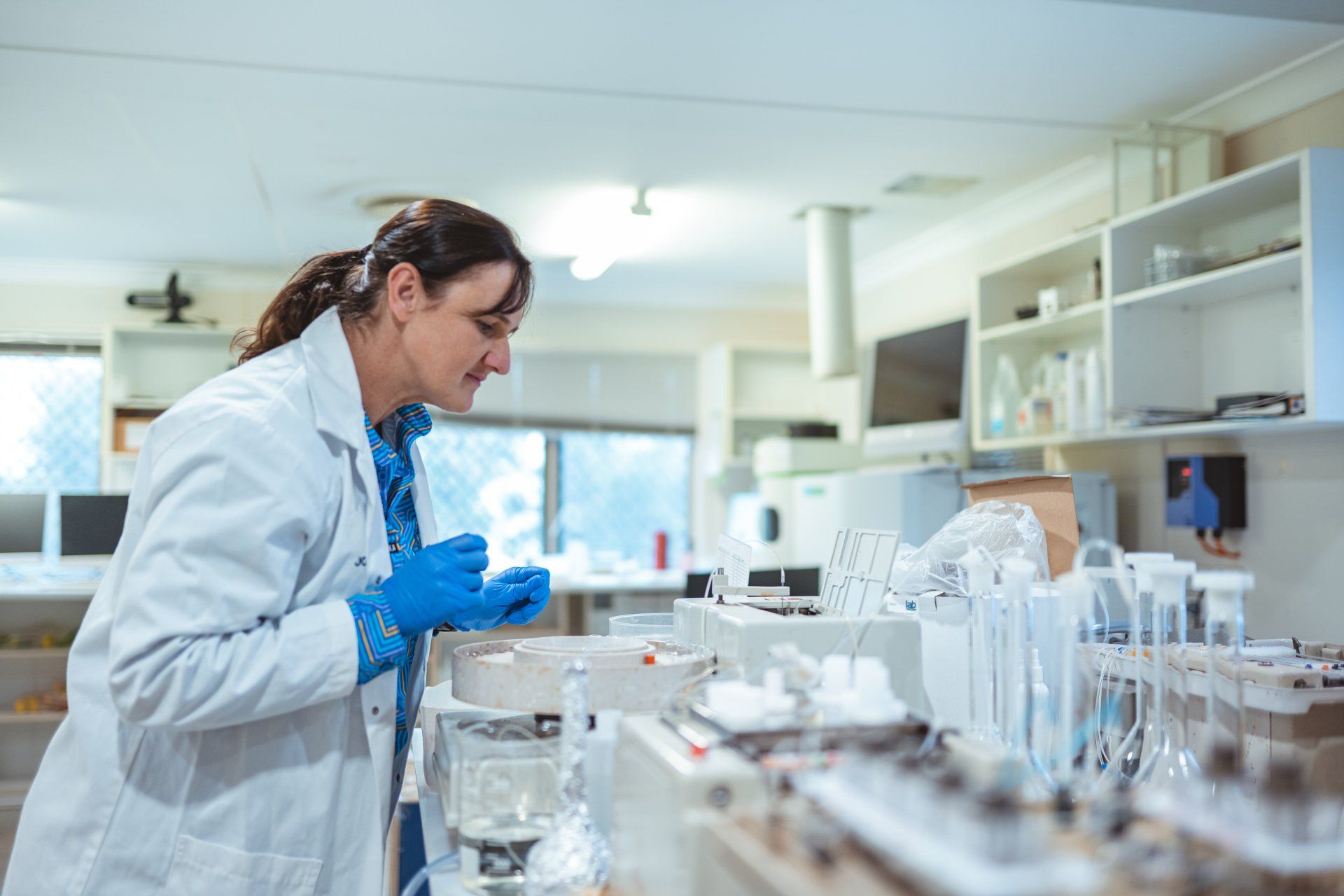Water Testing
Why do I need water testing?
There are many reasons for water analysis, but the two main reasons are for diagnostic purposes and spray calculations. Water is used in every agricultural setting, including the home gardeners. As water is fluid, it is constantly changing, and its chemical parameters may change dramatically due to many reasons. These changes can have consequences in farm situations from irrigating through to its use in spray applications. When there are issues with plant growth and spray effectiveness water testing should be conducted to ensure there are no abnormal chemical properties affecting the plant. When mixing chemicals for spray applications, the pH is very important to ensure the chemicals work effectively. Without water analysis the balance of pH maybe incorrect and the chemicals not working to their full potential.

When and how to collect water samples for testing
The main objective when collecting water for analysis is to obtain a representative sample of the water source and to make sure you do not contaminate this water before it is received at the laboratory. There is no set procedure for this but if you follow the recommendations below you should have a good random sample.
How to take the Sample
Water for analysis needs to be collected in bottles that do not react with the water. Have you ever purchased a bottle of water in a plastic bottle? Yep, use one of those. Normally these bottles are pretty good. Once you have emptied or consumed the water inside just wash it with some detergent and rinse it well in your normal house water. It is then ready to use. Just make sure when you obtain the water that you are getting tested that you rinse the bottle out a minimum of 3-5 times with this water as well to thoroughly coat the inside of the bottle.
Collecting water samples
Dams and Lakes: Visually divide the surface into appropriately sized squares. From each square take 3 random sampling of approximately the same size and place in a bucket (please make sure this is free from contamination and has been rinsed in sampled water already). Collect the samples at a similar depth - preferably 50cm if possible. Once the samples have been mixed in the bucket provide a sub sample of this to the laboratory.
Rivers: Collect the samples from the middle of the river at an approximate middle depth.
Bore Water: Pump for at least 30 minutes to ensure a representative sample.
Rain Water Tanks: Try to take the sample in the tank rather than using a tap as the water may be contaminated through the line.
Do's and Dont's
DO: use the right collection bottles – low density polyethylene, the same as what you buy your water from at the supermarket.
DO: Triple wash the container with the water you are going to test.
DO: Squeeze all the air out of the bottle when collecting and close firmly.
DO: Keep cold and get to the lab as soon as possible.
DON’T: Use coke, juice, milk or wine bottles!
DON'T: Leave the sample in your vehicle to get hot.
DON’T: Assume water chemicals never change.
DON'T: Forget to label the sample.
Sample Handling and Transport
When you have collected your sample, you need to ensure there is little air in your container. To do this you should fill your bottle to maximum capacity and then squeeze it slightly while you are putting the cap on. These samples need to be kept refrigerated until they arrive at the laboratory. If possible, they should be at the laboratory within 24hrs of collection.
Turn Around Time
Water analysis is completed in 5-10 working days dependent on the number of samples we receive. We analyse electrical conductivity, pH and total alkalinity when the sample is received, after this the sample is preserved and run for the remaining analytes during the week. We can give you some indication earlier if required, please communicate with staff at time of sample receipt.

